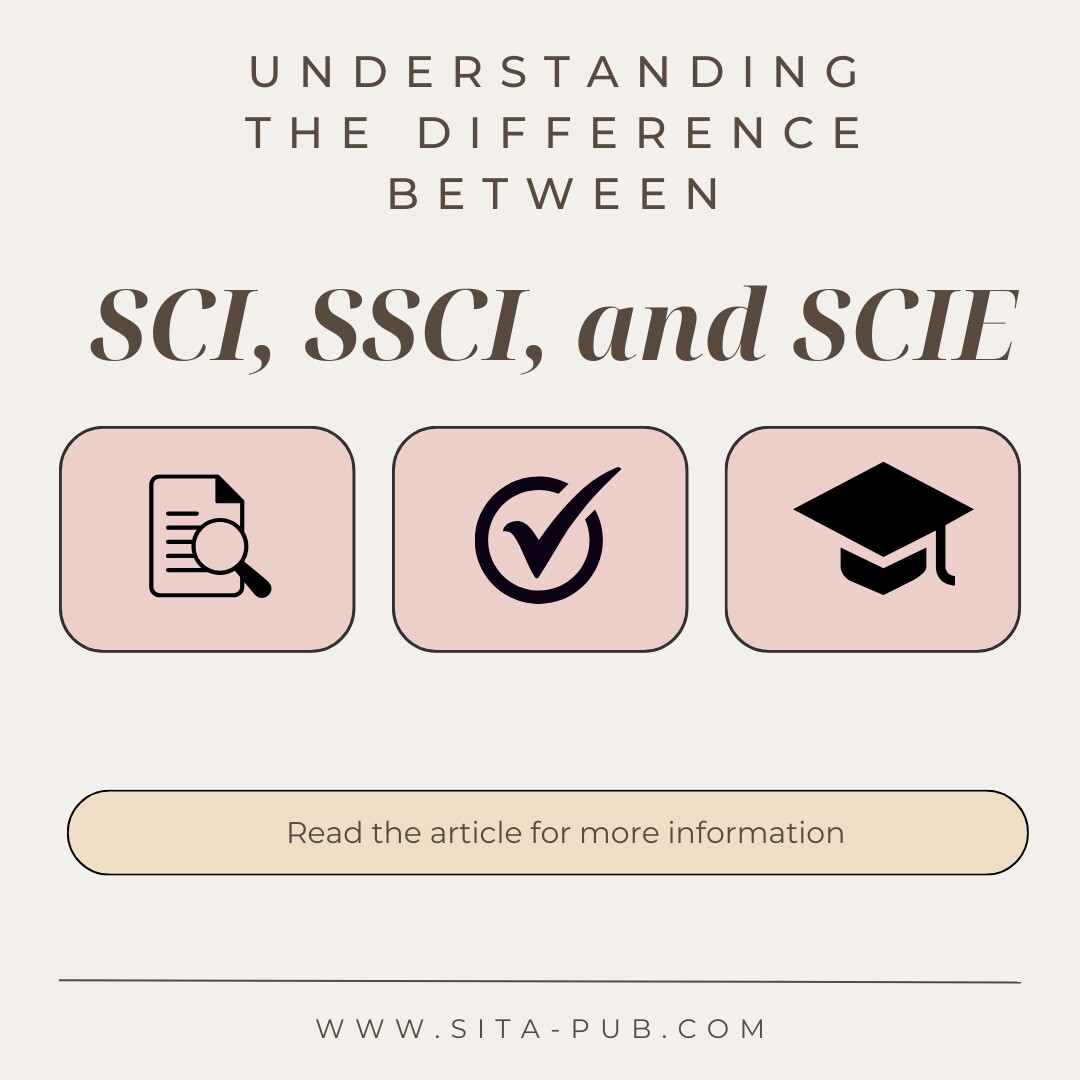Understanding the Difference Between SCI, SSCI, and SCIE


When researchers want to share their work, they often publish in academic journals. Different systems help organize and evaluate these journals, and three important ones are the Science Citation Index (SCI), Social Sciences Citation Index (SSCI), and Science Citation Index Expanded (SCIE). Let’s break down what each of these is and how they differ.
The Science Citation Index (SCI) is a database for scientific research. It focuses mainly on fields like:
Physics: This is the study of matter and energy. Researchers explore how the universe works.
Chemistry: This field looks at substances, what they are made of, and how they interact.
Biology: This is the study of living things, including plants, animals, and humans.
Medicine: Research here focuses on health, diseases, and treatments.
Quality Journals: SCI includes journals that are highly respected in the scientific community. They have strict rules for what gets published, ensuring only reliable and original research is included.
Citation Tracking: Researchers can see how many times their work is cited by others. This helps them understand the influence and importance of their research.
Impact Factor: Journals in SCI often have an impact factor, which shows how frequently articles in that journal are cited. A higher number means the journal is influential and well-regarded.
Research Metrics: SCI provides tools and data to assess the quality of research. This information is valuable for job applications, promotions, and funding opportunities.
The Social Sciences Citation Index (SSCI) focuses on social sciences, which study human behavior and society. It includes areas such as:
Psychology: Research in this field looks at how people think and behave.
Sociology: This area studies how societies work and how people interact.
Economics: Here, researchers analyze how resources are produced, distributed, and consumed.
Political Science: This field explores political systems and governmental behavior.
Top Journals: SSCI includes leading journals that publish important studies in social sciences. This helps researchers understand complex social issues.
Citation Analysis: Just like SCI, SSCI allows researchers to see how often their work is cited. This helps in identifying key studies and trends in the field.
Interdisciplinary Research: SSCI includes journals that cover multiple areas of social science, encouraging researchers from different fields to work together.
Impact Factor: Journals in SSCI also have impact factors, helping researchers choose where to publish based on a journal’s reputation.
The Science Citation Index Expanded (SCIE) is an updated version of SCI. It includes more journals and covers a wide range of scientific areas.
Wider Coverage: SCIE has a broader selection of journals than SCI. This means researchers can find more studies and articles related to their work.
Interdisciplinary Journals: SCIE features journals that mix different scientific fields, promoting comprehensive and collaborative research.
Accessibility: SCIE aims to make a wider range of research available to scholars and professionals, helping to spread knowledge across various disciplines.
Citation Tracking: SCIE also provides tools for tracking citations, allowing researchers to measure the impact of their work.
Feature | SCI | SSCI | SCIE |
Focus Area | Natural and Physical Sciences | Social Sciences | Broader Science Coverage |
Disciplines Covered | Physics, Chemistry, Biology | Psychology, Sociology, etc. | Similar to SCI, more journals |
Citation Tracking | Yes | Yes | Yes |
Impact Factor | High-impact journals | High-impact journals | Includes varying impact levels |
Interdisciplinary | Limited | Moderate | High |
Understanding the differences between SCI, SSCI, and SCIE is essential for researchers who want to publish their work effectively. Each index serves different academic fields and has specific purposes for citation analysis and journal selection. By knowing these differences, researchers can navigate the academic publishing world better and choose the right journals for their work. This knowledge improves the visibility and impact of research across all disciplines.

If you're looking to publish your research in high-impact journals like those indexed in the SCI, SSCI, or SCIE, we can help! Our publication support services provide guidance on manuscript formatting, journal selection, and submission processes. Let us assist you in navigating the complexities of academic publishing to ensure your work reaches the right audience.
If you have any questions, inquiries, or would like to learn more about our services, please don't hesitate to reach out to us. Our dedicated team is ready to assist you.